Plan your solar cooking around peak sunlight hours between 11:00 am and 3:00 pm when UV exposure is strongest. You'll want to position your cooker to face the sun's direction – easterly for lunch and westerly for dinner. Keep track of seasonal patterns, as southern regions offer year-round cooking while northern areas face winter challenges. Don't forget to check cloud coverage, as scattered clouds can reduce cooking efficiency by up to 40%. By staying mindful of these weather factors and using apps like Dark Sky, you'll discover how to optimize your solar cooking success.
Watch for Peak Sunlight Hours
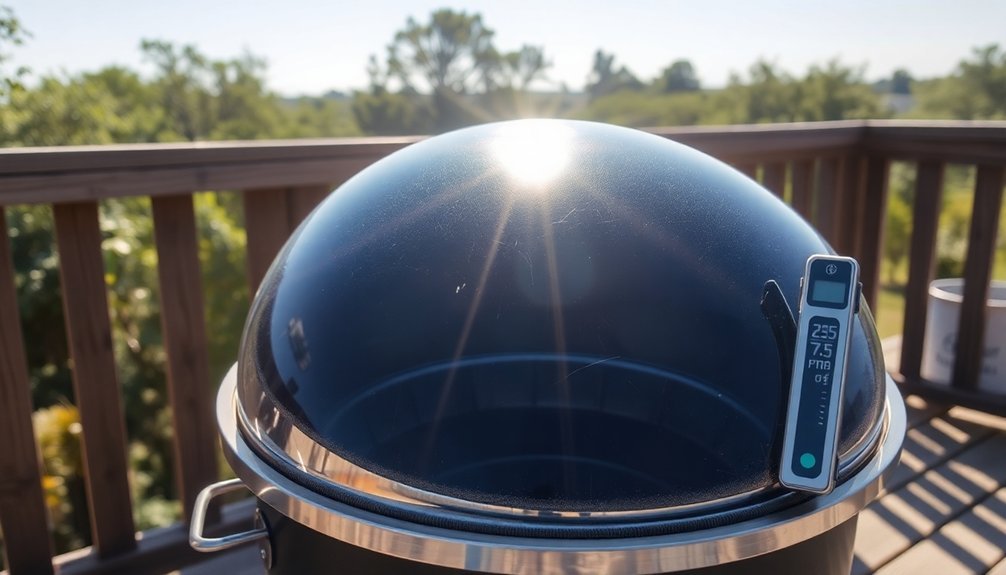
When planning to cook with solar energy, timing is everything. You'll get the best results between 11:00 am and 3:00 pm, when the sun is directly overhead and UV rays are strongest. While you can start as early as 9:00 am or cook until 4:00 pm, you'll need to adjust your techniques during these extended hours.
To maximize efficiency, position your solar cooker to face the direction where the sun will be during your cooking time. For lunch, orient it easterly; for dinner, face it westerly. Check that the cooker's shadow falls directly behind it, and reposition every couple of hours for longer cooking sessions. Using dark-colored cookware will help absorb more heat and improve cooking efficiency.
If you're baking bread or cakes, schedule these tasks during peak hours when sun intensity is highest. Remember to use a thermometer to guarantee food reaches safe temperatures.
Track Seasonal Weather Patterns
As the seasons change, your success with solar cooking largely depends on understanding and adapting to shifting weather patterns. Your location plays an essential role – southern regions like Arizona offer more consistent year-round cooking opportunities, while northern areas face greater challenges during winter months.
Pay attention to your region's unique climate variations. Coastal areas might experience marine layers that affect cooking times, while higher elevations could see more precipitation and temperature fluctuations. Even in temperatures as low as negative five degrees, successful solar cooking is possible with proper equipment and technique.
You'll need to adjust your cooking schedule accordingly, especially during winter when days are shorter. Consider splitting cooking tasks across multiple days when necessary, and use insulation to maintain temperatures.
Don't forget to monitor local weather forecasts and plan your solar cooking around clear-sky days, particularly during the peak hours between 11:00 am and 3:00 pm.
Monitor Cloud Coverage Daily
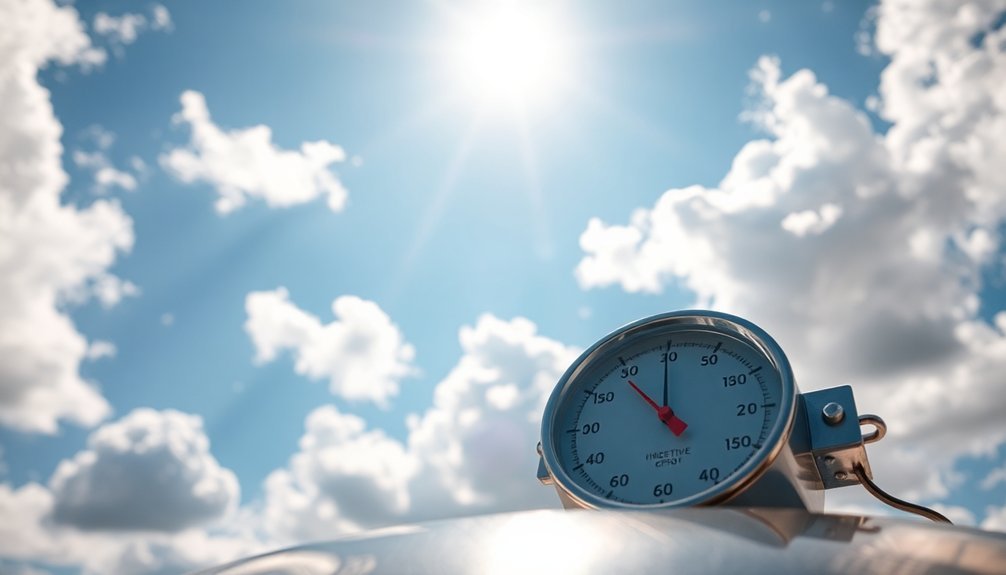
Successful solar cooking depends heavily on understanding cloud coverage patterns throughout the day.
You'll need to assess the sky using established cloud cover categories, from clear conditions (0/8) to overcast (8/8). Keep in mind that scattered clouds (3/8 to 4/8) can affect cooking times by 25-40%. Consider using reliable apps like Dark Sky forecasts to plan your cooking schedule more effectively.
To monitor clouds effectively, use a combination of visual observations and mobile apps.
Take photos in all directions and note any unusual conditions like dust or smoke. You'll want to make real-time adjustments to your solar cooker's position and reflector angles as cloud patterns shift.
Track temperature fluctuations and maintain detailed logs of how different cloud conditions impact your cooking results. This data will help you better predict cooking times and maintain ideal heat levels despite changing weather conditions.
Frequently Asked Questions
Can Solar Cooking Work in High-Altitude Locations With Thinner Atmosphere?
Yes, you'll find solar cooking works exceptionally well at high altitudes. The thinner atmosphere allows more intense UV rays to reach your cooker, and despite cold temperatures, you'll experience enhanced cooking efficiency at elevation.
How Does Air Pollution and Smog Affect Solar Cooking Efficiency?
You'll experience reduced cooking efficiency when smog and pollution block or scatter sunlight. Your solar cooker's performance can drop considerably, leading to longer cooking times and lower temperatures. You'll need more frequent cleaning too.
What Impact Does Humidity Have on Solar Cooking Temperatures?
You'll notice slower cooking times when humidity is high, as water vapor reduces solar radiation absorption and heat retention. Your cooker's surface may collect moisture droplets, reflecting sunlight away and lowering internal temperatures.
Does Wind Speed or Direction Affect Solar Cooking Performance?
Yes, wind considerably affects your solar cooking. You'll see major temperature drops in high winds, with speeds over 25 mph reducing cooking temps from 700° to 300°. Wind direction matters less than speed.
Can Solar Cooking Be Effective During a Partial Solar Eclipse?
You'll experience reduced cooking efficiency during a partial solar eclipse due to decreased sunlight. However, you can still cook if you've got a well-insulated solar oven and plan ahead for longer cooking times.
In Summary
You'll get the best results from sun cooking when you consistently follow these three essential weather guidelines. By timing your cooking during peak sunlight, understanding seasonal changes, and keeping an eye on cloud patterns, you're setting yourself up for success. Don't let weather uncertainties discourage you – with these tips, you'll master the art of solar cooking and enjoy this eco-friendly cooking method year-round.

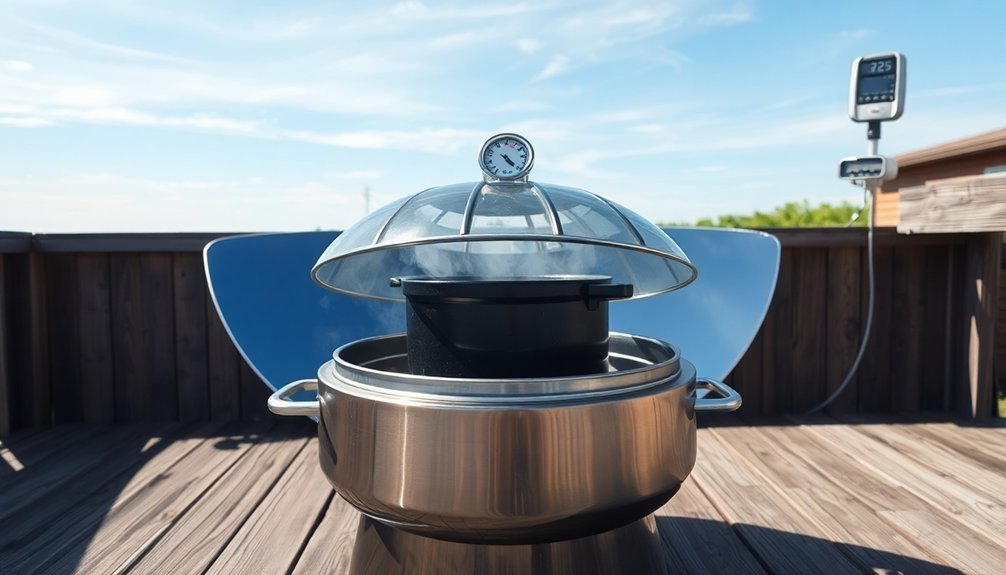
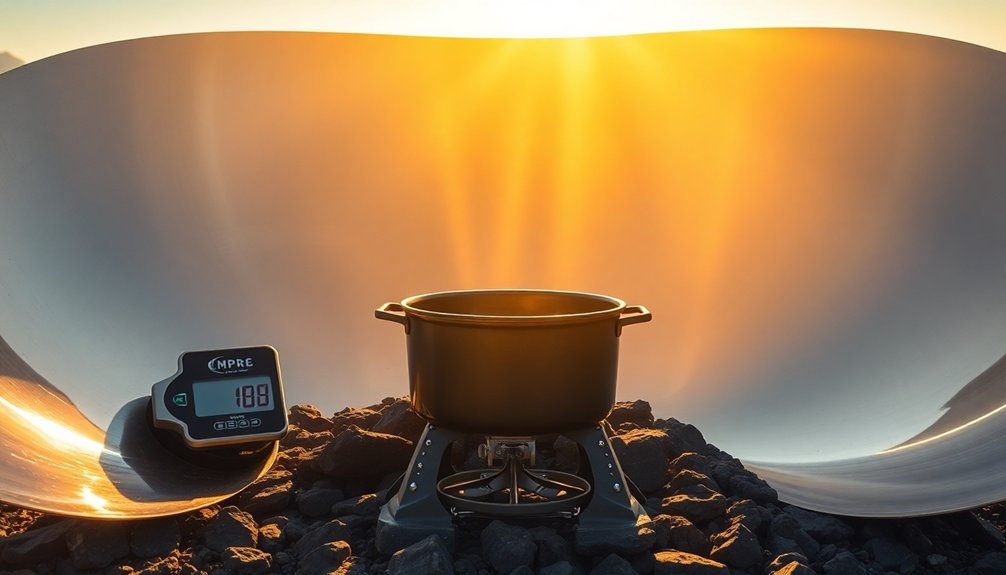
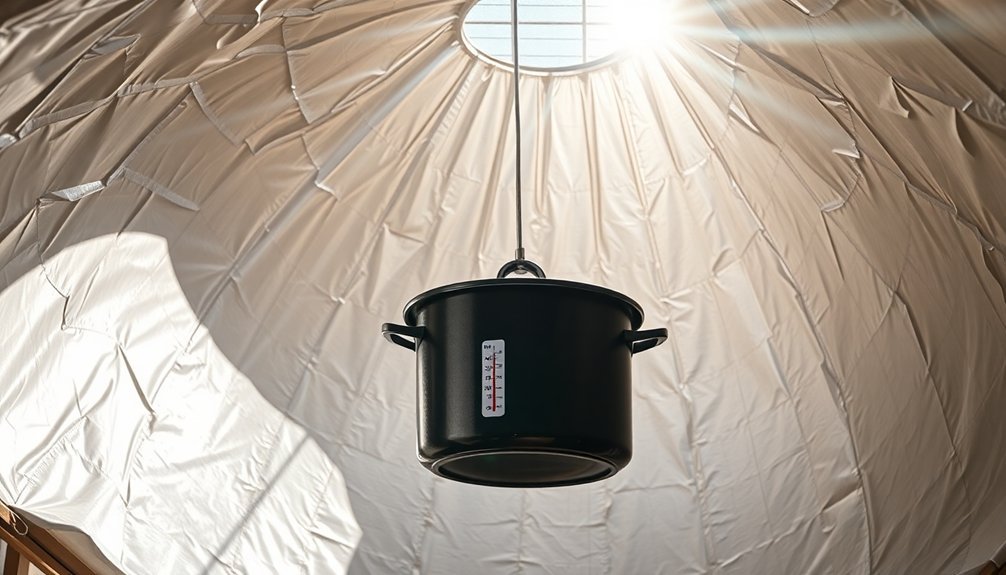

Leave a Reply